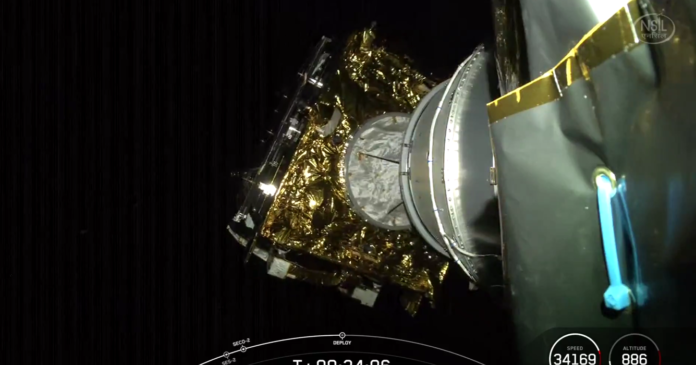In a significant milestone for India’s space program, SpaceX’s Falcon 9 rocket successfully launched the Indian Space Research Organisation’s (ISRO) GSAT-20 communication satellite, also known as GSAT-N2, on Tuesday, November 19, 2024. The mission marks ISRO’s first commercial collaboration with SpaceX, highlighting the growing partnership between international space agencies.
The GSAT-20 satellite, developed by NewSpace India Limited (NSIL), the commercial arm of ISRO, weighs 4,700 kilograms and operates in the Ka-band. Designed to enhance data and internet connectivity in remote regions and enable in-flight internet services across the Indian subcontinent, it boasts a mission lifespan of 14 years. Equipped with 32 user beams—8 narrow spot beams over the Northeast and 24 wide spot beams over the rest of India—the satellite provides a remarkable throughput of 48 Gbps.
“This homegrown satellite will bridge a critical gap in in-flight internet connectivity over Indian airspace,” said Dr. M Sankaran, Director of the UR Rao Satellite Centre. “It is India’s highest throughput satellite and the only one exclusively operating in the Ka-band, a highly sought-after frequency range.”
The decision to utilize SpaceX’s Falcon 9 came as ISRO’s indigenous Mark-3 launch vehicle, capable of placing up to 4,000 kilograms into a geostationary transfer orbit, could not accommodate the GSAT-20’s weight. The launch from Florida’s Cape Canaveral enables India to meet increasing demands for high-speed internet, particularly for aviation and underserved regions.
The GSAT-20 also addresses India’s regulatory changes, which now allow in-flight connectivity within Indian airspace. Aircraft flying at altitudes above 3,000 meters can provide Wi-Fi services, a shift from earlier policies requiring flights to disable internet services upon entering Indian airspace.
NSIL announced the successful launch on social media platform X, saying, “NSIL’s GSAT-N2 High-throughput (HTS) Communication satellite successfully launched from Cape Canaveral, USA on 19th November 2024.”
This development positions India on the global map for aviation internet services, ensuring better connectivity and boosting digital inclusion in remote and underserved areas.



